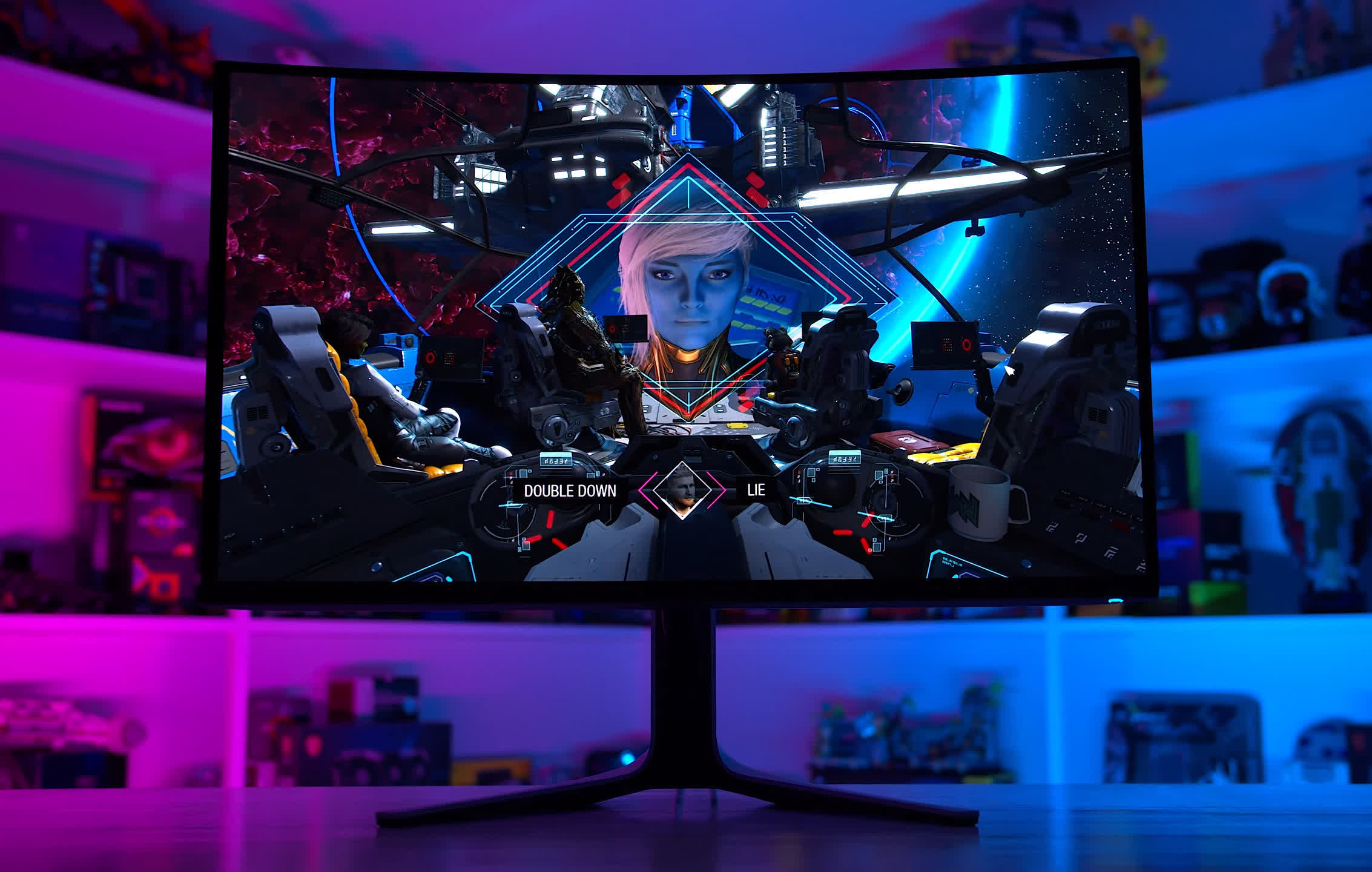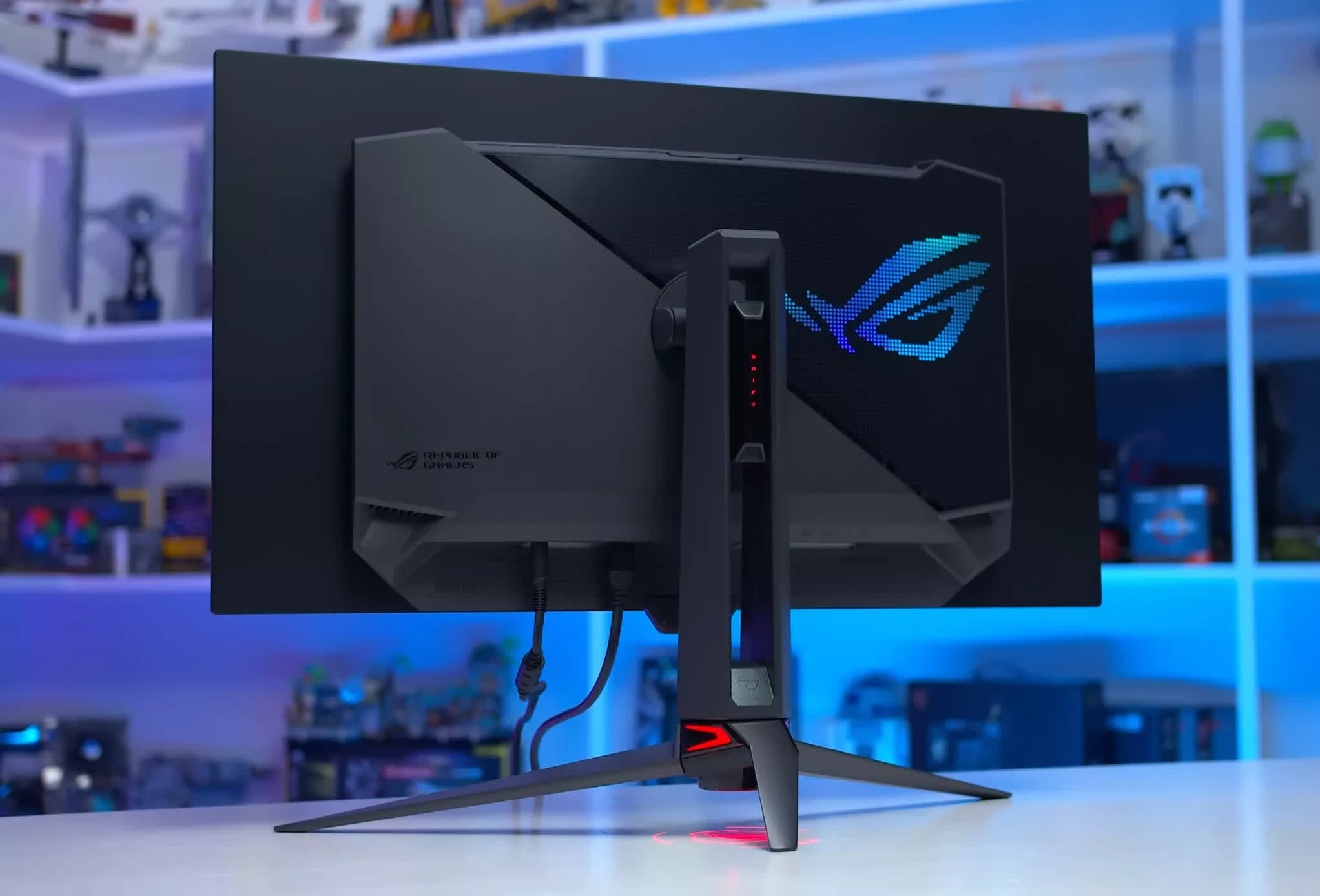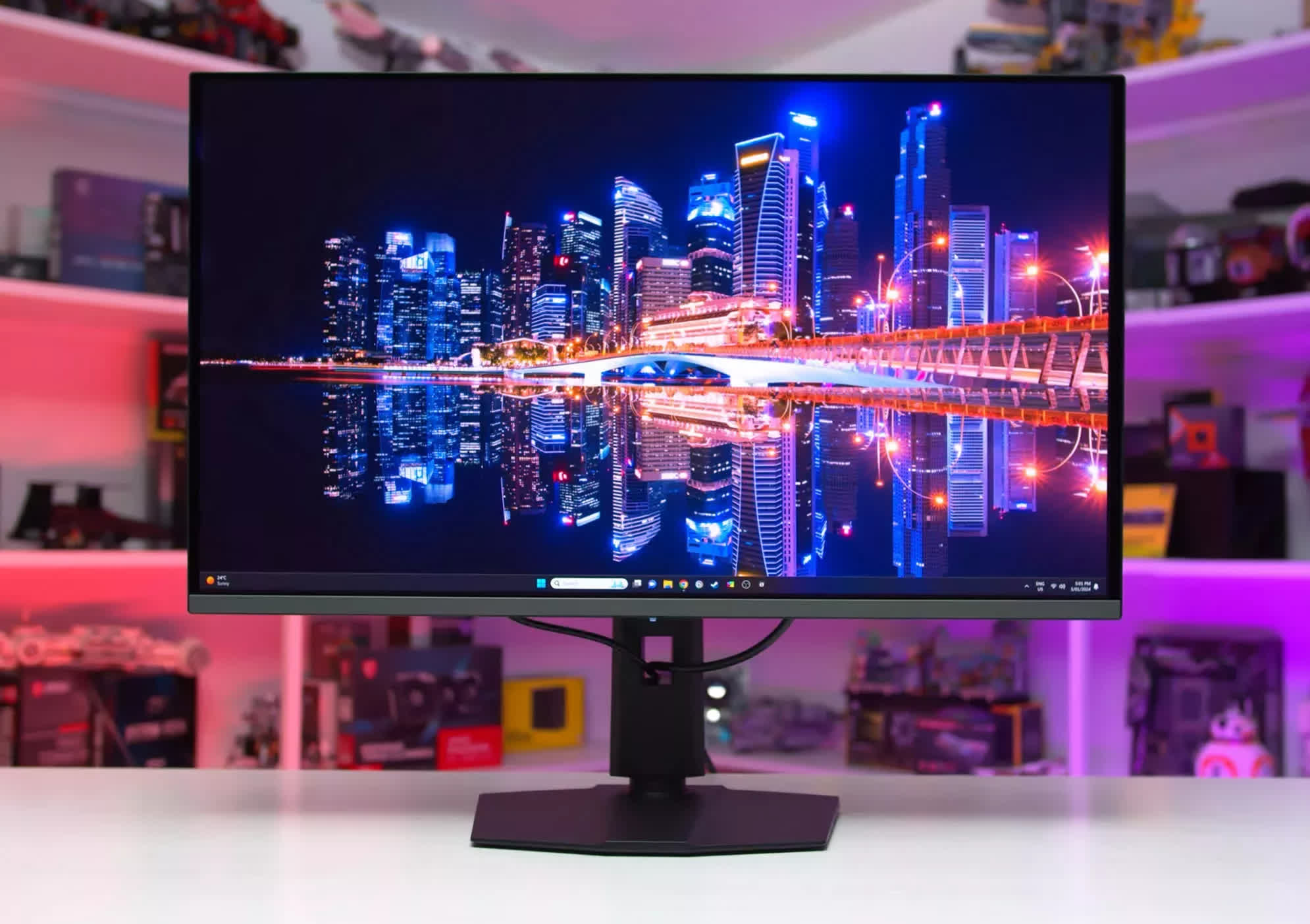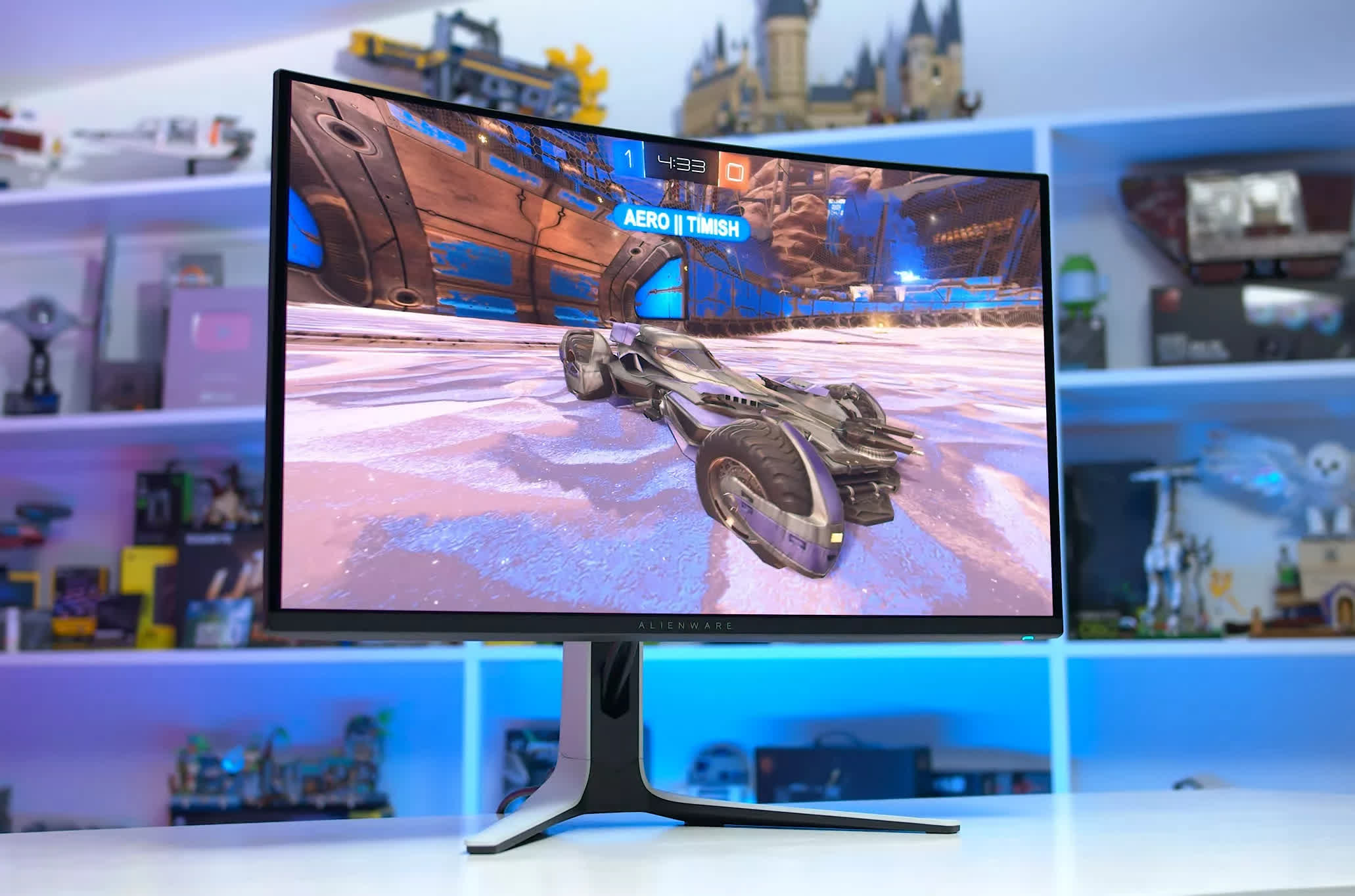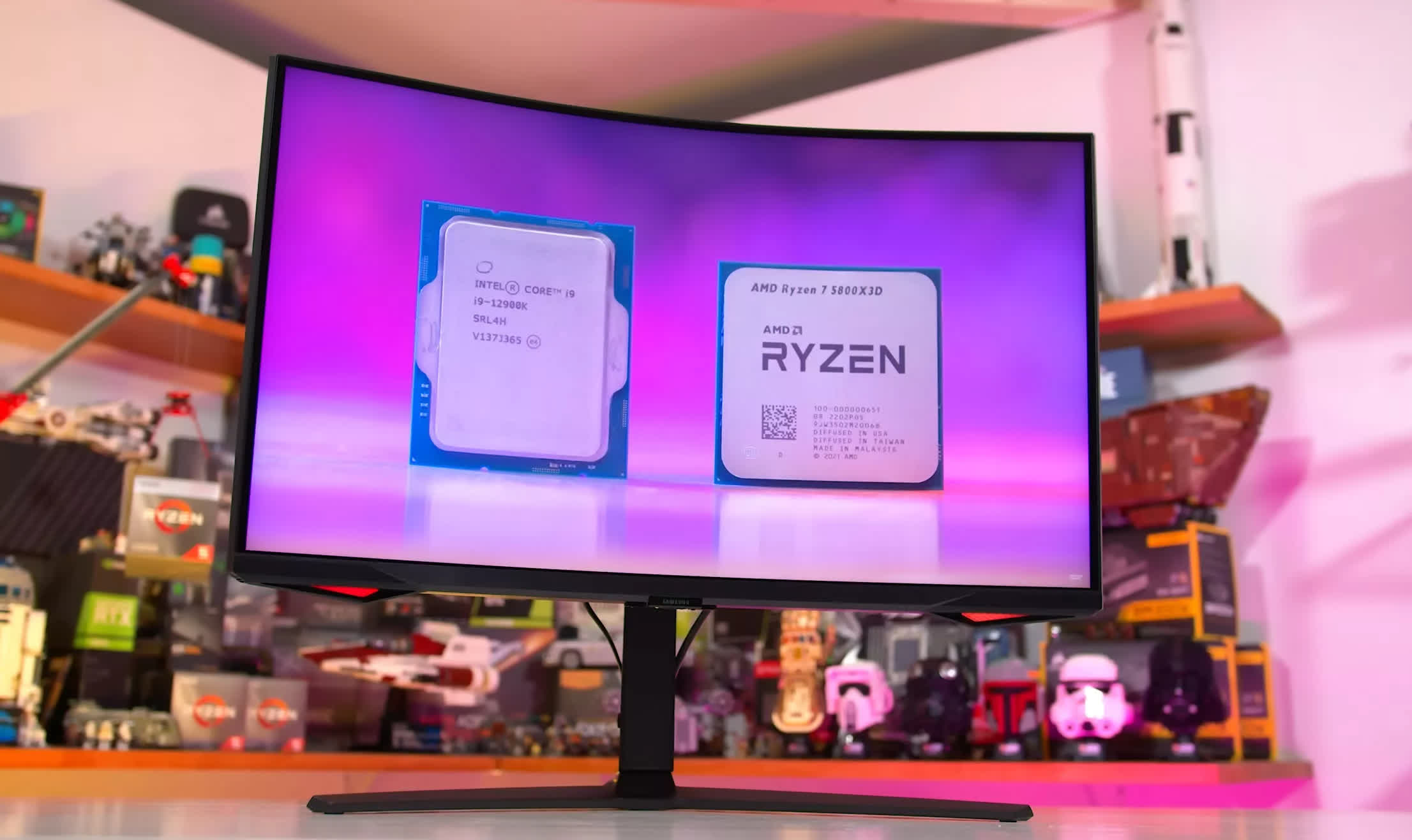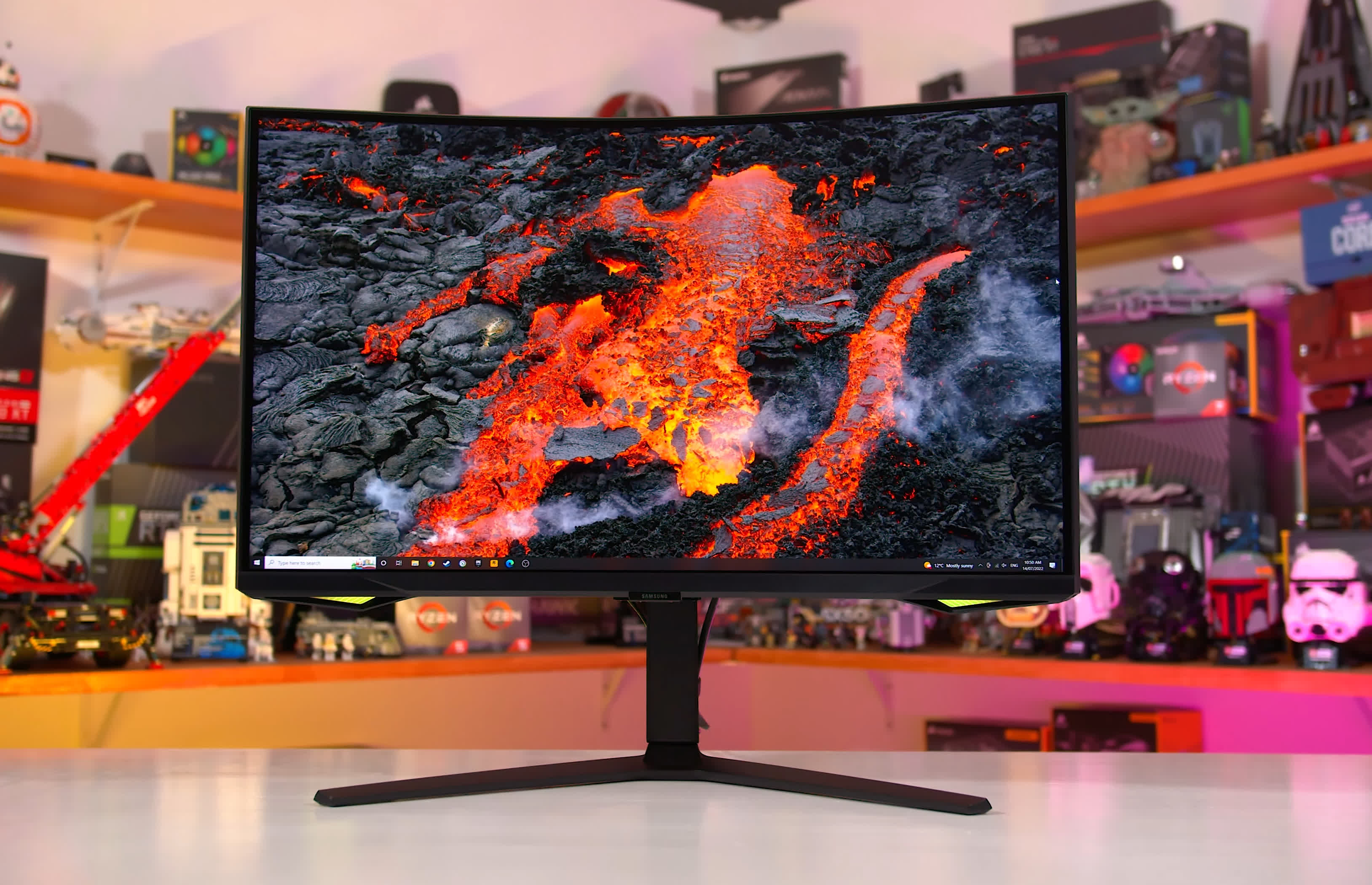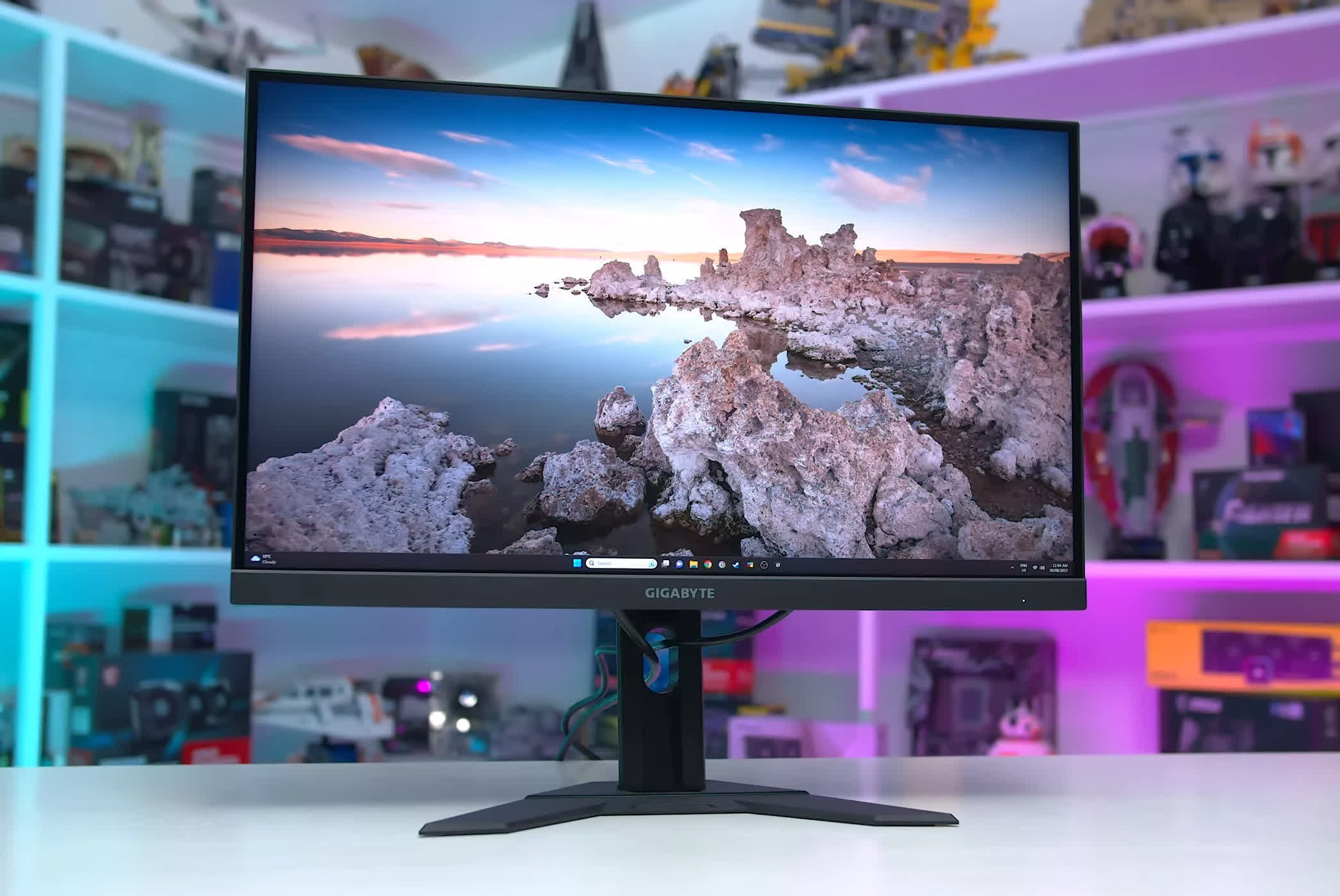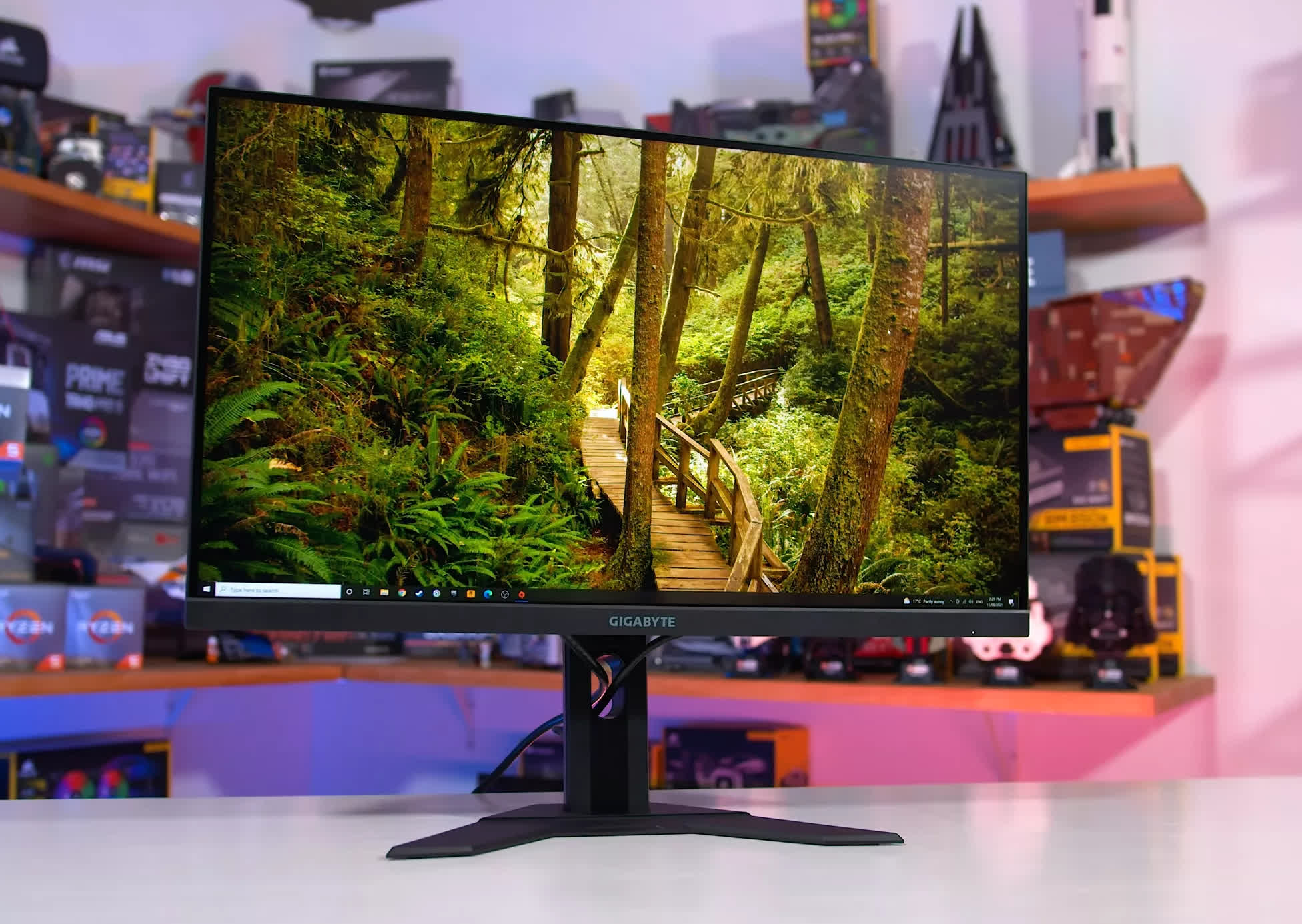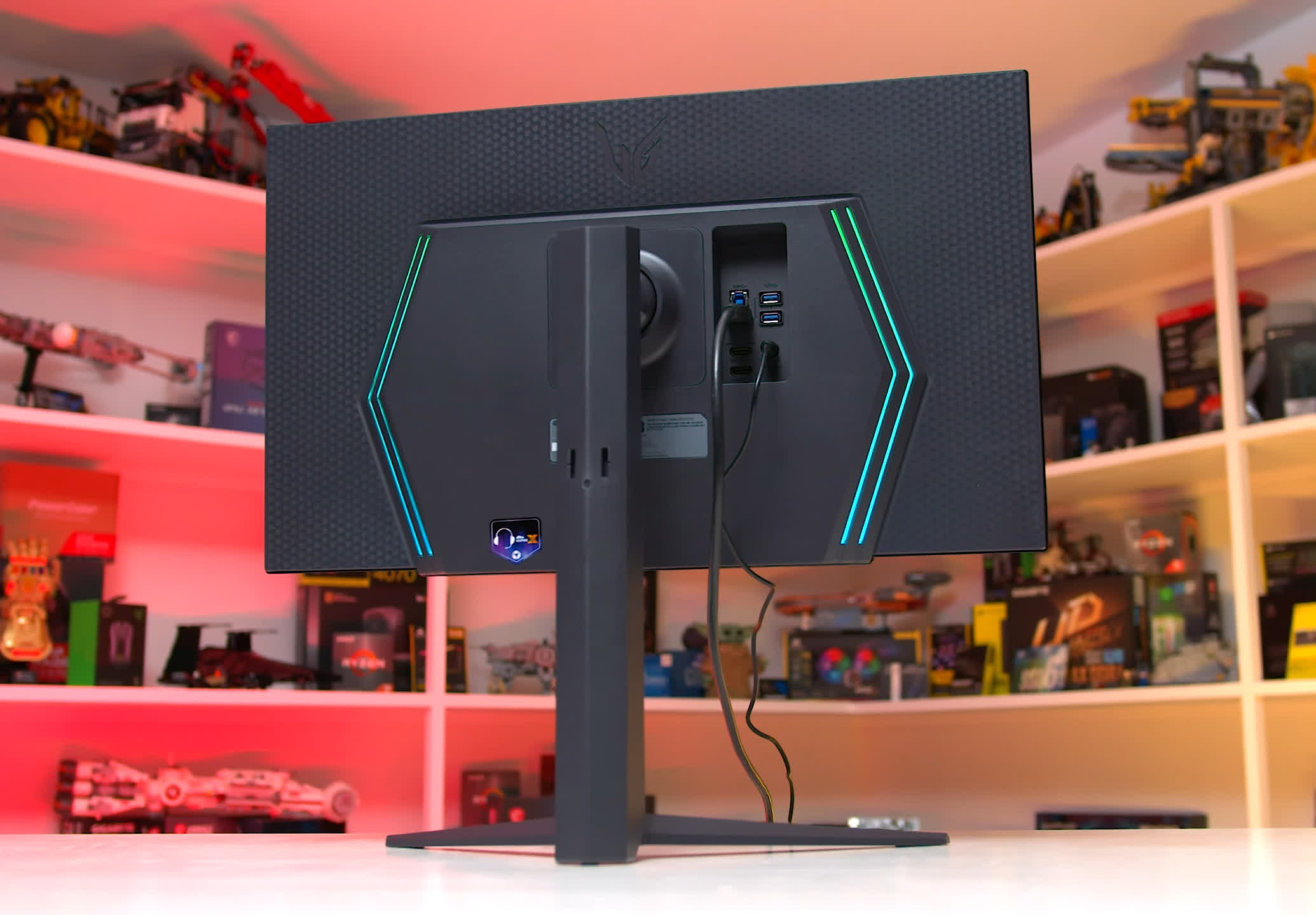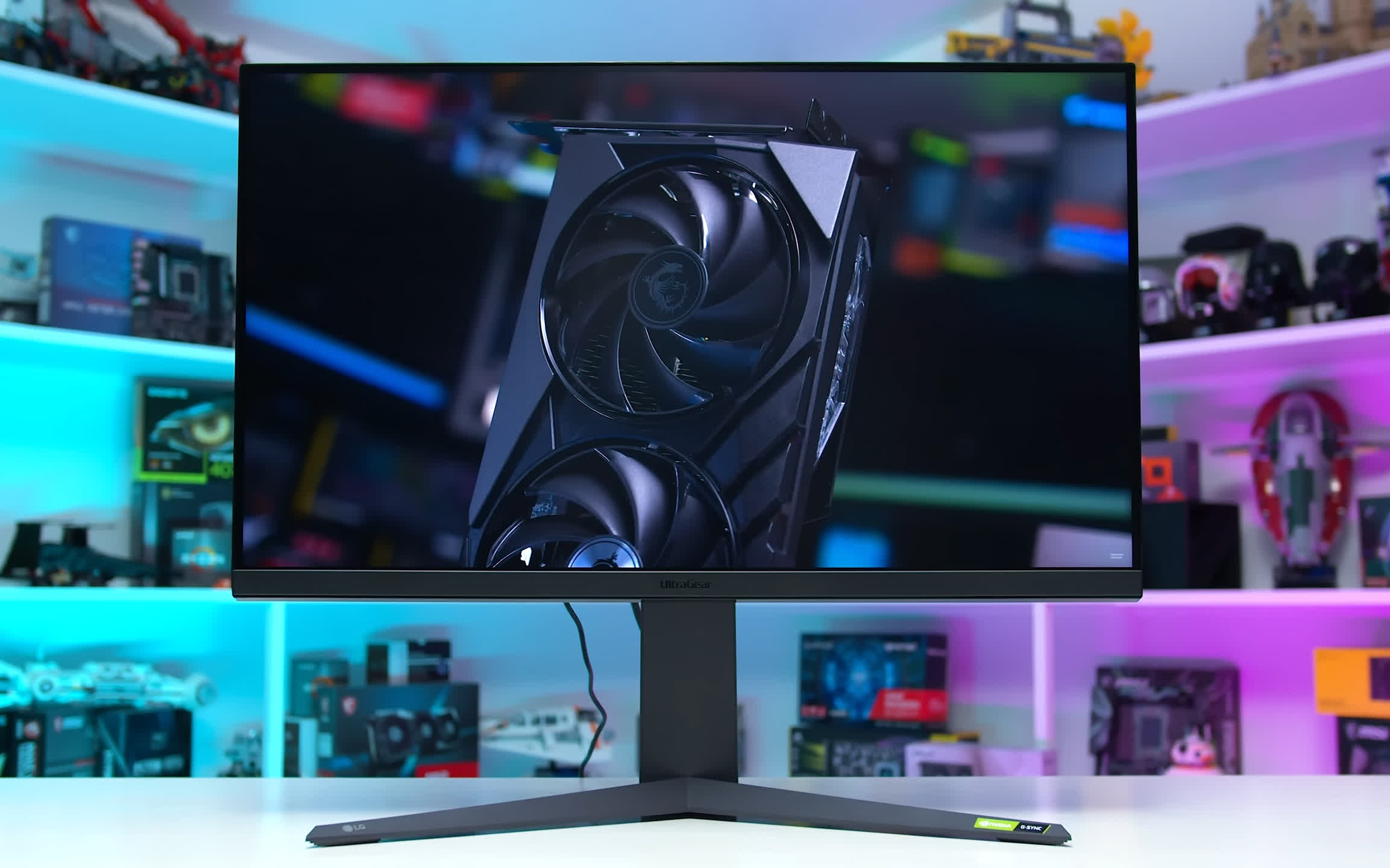See our latest update: The Best 4K Gaming Monitors
There has been significant change and improvement in the 4K gaming monitor market over the past few years. These days, if you're in the market for a high-end display, it simply makes sense to go 4K. Some of the best HDR monitors currently available are 4K models. Additionally, for those looking at more mainstream offerings, there are affordable options at this high resolution, so don't rule out 4K even if you think it's not quite in your ballpark.
In today's guide, we will exclusively discuss 4K gaming monitors, which means we are not considering any 60Hz displays; the minimum here is 120Hz. We know many people still buy affordable 4K 60Hz displays, but we don't recommend you do that for gaming.
As usual, our recommendations will mostly cover products that we've reviewed and tested ourselves. We have comprehensive reviews for many of the products mentioned in this article, which provide more in-depth testing and insights. Just follow the links and you will get there.
Best 4K HDR Gaming Monitor
Asus ROG Swift PG32UCDM | MSI MPG 321URX

If you're after the best overall 4K gaming monitor on the market right now, look no further than the latest 32-inch 4K 240Hz OLED displays. Two new panels have hit the market this year, featuring WOLED or QD-OLED technology, and depending on what you're after there are lots of great choices for the best of the best.
We recommend a 4K OLED as the best choice due to two main attributes of OLED panels that significantly enhance the gaming experience. First is their lightning-fast transition times, which result in elite motion clarity compared to an LCD operating at the same refresh rate. Second is individual pixel control, which allows pixels to fully switch off to display deep rich zero level blacks, and it means there's per pixel local dimming for brilliant HDR control at the pixel level – no backlight zones to worry about.
For most, a 4K QD-OLED monitor is likely the best option, offering – based on our testing – higher real-world HDR brightness, better color volume, slightly improved text quality, and more attractive pricing. The glossy screen coating may present issues in brighter environments, but its clarity is highly desirable, especially for those who prefer it over matte screens and their characteristic coating grain.
The best 4K QD-OLED gaming monitor at the moment is the Asus ROG Swift PG32UCDM. The differences among the models we've tested – such as motion clarity, response times, and brightness – are minor, but the performance of this Asus monitor stands out, thanks to its robust feature set.
Notably, the Asus model boasts an exceptional, highly accurate sRGB mode that remains adjustable; outstanding HDR accuracy, including impressive peak brightness; and ELMB black frame insertion for those who wish to use it. The port selection is comprehensive, and Asus has also announced future Dolby Vision support through a firmware update. Priced at $1,300, its premium is justified by its performance.
MSI MPG 321URX 32"
Alternatively, the MSI MPG 321URX is worth considering, especially for those in the United States, where it is available at a significantly lower price of $950. It performs closely to the Asus model but lacks some features. If the additional features of the Asus are not necessary, opting for the MSI model to save $350 is a sensible choice.
However, outside the United States, the MSI model tends to be priced similarly to the Asus model, making the PG32UCDM a more appealing choice.
The Dell Alienware AW3225QF also comes highly recommended, particularly for those preferring a curved screen. It is the only 32-inch 4K 240Hz QD-OLED gaming monitor featuring a curved panel. We generally favor flat panels for their suitability for productivity tasks, which is a potential use case for a 32-inch 4K monitor, leading us to prefer the Asus and MSI models. Nevertheless, Dell's offering delivers excellent performance, a good set of features, including Dolby Vision support, and an attractive price point of $1,200.
While the 4K 240Hz QD-OLED models are generally the preferred choice for most, particularly those focusing on single-player HDR gaming, 4K WOLED remains a strong contender. For gamers who enjoy fast-paced competitive multiplayer titles, a 4K WOLED like the LG 32GS95UE may be more suitable.
These panels feature a unique "Dual Mode," allowing them to switch between 4K 240Hz and 1080p 480Hz modes at the press of a button. The 1080p 480Hz mode offers noticeably improved motion clarity and reduced input lag compared to 4K 240Hz modes, making it an optimal choice for titles such as Counter-Strike, Call of Duty, or Apex Legends, if lower resolution is not a concern.
The main reason why we don't recommend the LG 32GS95UE as strongly as the QD-OLED pack is that it has a higher price tag of $1,400 and LG didn't calibrate this monitor as well as some of the QD-OLEDs, its brightness isn't as good, and there aren't as many features included: no USB-C or Dolby Vision for example. But because of the unique Dual Mode feature, it's still worth considering for some.
Best 4K HDR LCD Gaming Monitor
Samsung Odyssey Neo G7

Granted, not everyone is looking to buy a 32-inch 4K 240Hz OLED. You might be concerned about burn-in, even with some models offering 3-year warranties. You might prefer the better text clarity of an LCD, or you might desire higher levels of brightness. If you fall into one of these categories, a 4K HDR LCD gaming monitor might be a better choice.
Our recommendation in this category remains the Samsung Odyssey Neo G7 32-inch gaming monitor. It's a 4K 165Hz gaming display using VA LCD technology and featuring a 1,196-zone full-array local dimming backlight.
Thanks to this backlight and the use of high-contrast VA technology, the Neo G7 offers a true HDR experience that, in our opinion, comes closest to OLED of any LCD monitor we've tested so far. It doesn't quite match OLED for its richness, shadow detail, and viewing angles, but the HDR experience on offer is impressive.
The Neo G7 is one of the fastest LCD monitors we've tested in terms of response times. While motion clarity isn't as good as an OLED, it still offers a strong gaming experience – especially at 4K. The HDR experience is very good, with the combination of a high zone count backlight and great native contrast leading to minimal blooming in HDR content, while retaining the punch you should get from these displays. Peak brightness exceeds 1,200 nits, and overall, this display is somewhat brighter than what you'll get from an OLED, though not by a significant margin.
Being a more "traditional" gaming display, the Neo G7 has a few other advantages. The use of VA LCD technology means there's no risk of burn-in, and it has a normal subpixel structure which plays nicely with desktop apps and text. And of course, the size is really nice for desktop use, 32 inches with this sort of resolution is fantastic.
However, there are some drawbacks. The 1000R curvature is very aggressive and doesn't add to the experience, so while the display is better suited for desktop use, we don't think it's all that versatile as a productivity or creator monitor. Input latency with dimming enabled is unimpressive, and weak viewing angles also require you to view the display directly to get the best HDR experience. But these flaws are more on the minor end of the scale and shouldn't detract much from what is otherwise a great HDR gaming experience.
Another aspect that works in favor of the Neo G7 is its current price tag. You can regularly find it around $800, which is about 30 percent cheaper than a typical 4K OLED. We would not recommend buying it if it was much more expensive than that (the original MSRP of $1,300 is ridiculous in 2024). We would also avoid the higher refresh rate Neo G8 due to a few issues we mentioned in our review; the Neo G7 is where it's at.
In the past few months, we have tested some other 4K HDR LCD options at lower price points, like the Acer Nitro XV275K P3, which offers a 27-inch IPS panel and 576-zone local dimming. We just haven't been impressed enough with them to recommend them at this point.
Best 27-inch 4K SDR Gaming Monitor
LG 27GR93U | Gigabyte M27U | Gigabyte M28U

If you're in the market for a standard 4K gaming monitor that doesn't support true HDR, you'll find them to be quite affordable compared to just a few years ago. 4K SDR gaming displays are comfortably in the mid-range now, and we absolutely would not pay more than about $500 for one at a 27-inch panel size.
Over the last couple of years, the standout choice in this category has varied, and typically what you'll get is pretty similar among the top models. We would keep our eyes on the MSI MAG 274UPF, the LG 27GR93U, and both the Gigabyte M27U and M28U, which depending on pricing in your region, could be the best choice. All four of these monitors offer similar specifications and perform well, with none being a clear standout in terms of performance or features.
The most affordable model at the moment is the MSI MAG 274UPF at around $400, providing a 27-inch 4K 144Hz IPS LCD gaming display with features like HDMI 2.1 and adaptive sync, though without real HDR hardware. $400 is about as good as it gets right now for that sort of hardware, however, this monitor could have been better optimized, which is probably why it has received a significant discount.
Response times aren't disastrous but are not the highlight of this product, and you'd need to be comfortable not receiving the fastest option to justify buying one. It's only mentioned here due to the low price; typically, we think you can find something slightly better for just $50 more.
The other main choices usually sit in the $450 to $500 range, and we would lean towards the Gigabyte M27U here, especially if you can find one at $450. This is a 27-inch 4K 160Hz IPS LCD that offers an excellent balance in performance across all areas, from response time speed to color quality. Motion performance is comparable to that of other modern IPS LCDs, and the panel is adequately optimized for variable refresh rate gaming; no glaring flaws here.
We're looking at a wide gamut experience, great brightness, reasonable factory calibration, and of course, the excellent resolution of a 4K panel that's well-suited to productivity work as well as gaming. There are no aspects of performance that particularly stand out, but there are no deal-breaker flaws either.
The Gigabyte M28U is similarly priced and is a little better optimized for high refresh rate gaming (around the 120 to 144Hz range), featuring superior factory calibration, especially in the sRGB mode, and a somewhat higher contrast ratio. The M27U is much brighter, consumes less power, has a slightly higher refresh rate, and is a little better optimized for variable refresh gaming. Overall, both are great value choices.
The LG 27GR93U is the most premium of the four monitors we've mentioned, most often priced at $500. It is also a slightly better product, with the price increase over the Gigabyte monitors being reasonable. Many aspects of performance are roughly the same, but choosing LG will provide some feature additions like hardware calibration support and slightly better response time optimization.
Until recently, the LG 27GR93U was hard to recommend due to an unusually high price tag in some regions, including the United States, but these days that's been adjusted, and around $500 seems appropriate.
Best 32-inch 4K SDR Gaming Monitor
LG 32GR93U

If you're in the market for a 4K SDR gaming monitor but think 27 or 28 inches is a bit too small, fortunately, there are 32-inch models available. Unlike years prior, where the quality of 32-inch panels was a noticeable downgrade relative to 27-inchers, that's no longer the case, although upgrading in size does come with a significant price premium.
The leading candidate in this category is the LG 32GR93U, a 32-inch 4K 144Hz IPS LCD. Over the last few months, its price has dropped from a rather hefty $800 to just $600, making it a much more attractive value proposition, especially with the release of new 4K OLEDs at the high end.
The 32GR93U performs well across different areas. It delivers good response times, and LG has optimized it well to offer a single overdrive mode experience; it's not the fastest product at 144Hz, but it's optimized to avoid inverse ghosting artifacts. Among 32-inch LCD monitors, this is one of the best displays we've seen in that area, which is especially important as older 32-inch models from a few years ago weren't very impressive in terms of motion quality.
This is complemented by excellent factory color tuning, an outstanding sRGB mode, hardware calibration support, strong DCI-P3 color space coverage, and good brightness. It offers fantastic versatility for those who want to game and use the nice large 32-inch 4K panel for productivity work; it's a really nice dual-use monitor. The main drawback here is the lack of any real HDR hardware capabilities, but this isn't as much of a concern at its new $600 price point.
With LG becoming more competitive on price, two of the monitors we've previously recommended are now more difficult to justify. The Lenovo Legion Y32p-30 remains a great product, but at $670, it's not as well optimized or calibrated as the LG. The Gigabyte M32U was also a good value product, but its price has consistently been between $600 and $650 over the last six months. With the 32GR93U now undercutting it and typically offering better performance, it no longer holds the value crown.
Essentially, we recommend the LG 32GR93U if you want a 32-inch 4K SDR gaming monitor; it's one of the better options we've reviewed in terms of performance, and now the price is excellent. That's what we love to see.
